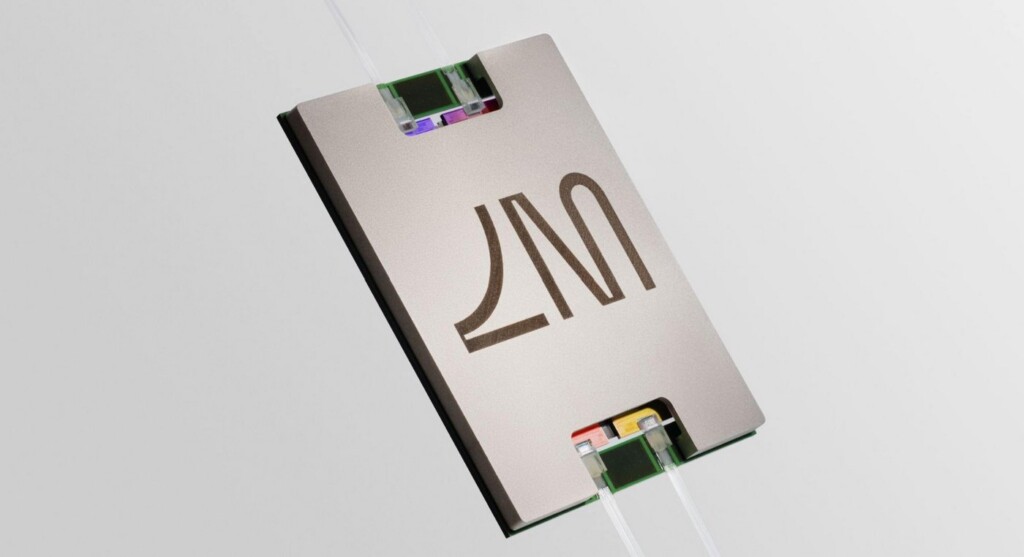Computer Chips Running at Speed of Light Boast Better Performance and Reduced Energy Use

A tech firm has just demonstrated that a computer chip using light and the speed at which it moves for processing is capable of handling real-world computer workloads at revolutionary speeds and energy efficiency.
The firm’s CEO has called it a “technology marvel” that stands to change the future of computing to one in which the single path of innovation that started with the first integrated circuit is departed from, and a multipolar world of computing possibilities is entered.
Described in two papers published in the journal Nature, Lightmatter’s photonic computer chips that combine the use of light and electricity are shown to increase computational performance, while reducing energy consumption, compared with conventional electronic chips.
These photonic chips might address the growing computing demands driven by advancing artificial intelligence technology.
“Computing stands at an inflection point unlike anything we’ve seen since the transistor was invented,” Lightmatter Co-founder and CEO Nick Harris wrote in a blog post heralding the invention. “Artificial intelligence workloads are driving computational demands beyond what traditional scaling laws can deliver.”
The problem, Harris lays out, is that existing ability to scale up the performance of closed circuits is encountering diminishing returns, as the increase in physical size to match the needs for increased performance will make them cost-prohibitive, but also just too large for modern devices.
Photonic computing by contrast uses photons rather than electrons, and presents a potential solution to these challenges. Multiplication and accumulation—central computational operations for artificial intelligence—can be performed faster and more efficiently using photonic circuits.
Lightmatter’s photonic processor performs 65.5 trillion adaptive block floating-point 16-bit (ABFP) operations per second, consuming only 78 watts of electrical power and 1.6 watts of optical power.
This integration level represents the highest yet achieved in photonic processing, and was used in the study to power a variety of currently-available state-of-the-art AI systems such as the natural language processing model BERT and a neural network called ResNet (used for image processing) at parity with the best of what the conventional silicon closed-circuit chip can offer an average consumer.
The authors show that their photonic processor has a range of applications, including generating Shakespeare-like text, accurately classifying movie reviews, and playing classic Atari computer games such as Pac-Man.
“Photonic computing has been in the making for decades, but these demonstrations might mean that we are finally about to harness the power of light to build more-powerful and energy-efficient computing systems,” notes Anthony Rizzo at Dartmouth College in a commentary piece released alongside the studies.
The photonic processors were built in a currently existing facility for microprocessor manufacture, and with the same machines. They fit into a normal motherboard, demonstrating that this is a technology that could be available in years rather than decades.
Lastly, the processor was built using only monochromatic light in a single spatial waveguide mode. This leaves plenty of room for future improvements that could use many frequency and spatial modes in parallel.
“For the first time in computing history, we’ve demonstrated a non-transistor-based technology capable of running complex, real-world workloads with accuracy and efficiency comparable to existing electronic systems,” said Harris.
COMPUTING POWER UP: Samsung Cuts Energy Usage of Their Computer Chips by 50% In Big Market Innovation
As Harris, a co-author on one of the two papers, points out, several other existing futures of computing are currently being investigated and developed, including quantum computing, computing systems based on DNA-RNA interactions or on human neurology, and traditional processors using carbon nanotubes rather than silicon.
Each has major hurdles to overcome, but Harris believes that together with Lightmatter’s photonic chips, they represent the future of computing— away from one in which the singular focus of making silicon chips smaller and more powerful, and into a new world where there are multiple methods of extreme-speed computation that are specialized to suit certain tasks.
MORE INNOVATION STORIES: This Innovation Could Extend Little-Used Zinc Battery Lifespan Hundreds of Times to Create Battery Revolution
“The invention of the integrated circuit, the microprocessor, or the transistor itself—none of
these innovations immediately replaced their predecessors, but each fundamentally changed what was achievable,” Harris writes.
“At Lightmatter, we’ve demonstrated that computing’s next chapter need not remain bound by transistor limitations. For an industry accustomed to continual reinvention, photonics represents an exciting and necessary new frontier.”
SHARE This Advance In The Future Of Computing With Your Friends…
>read more at © GoodNews
Views: 0